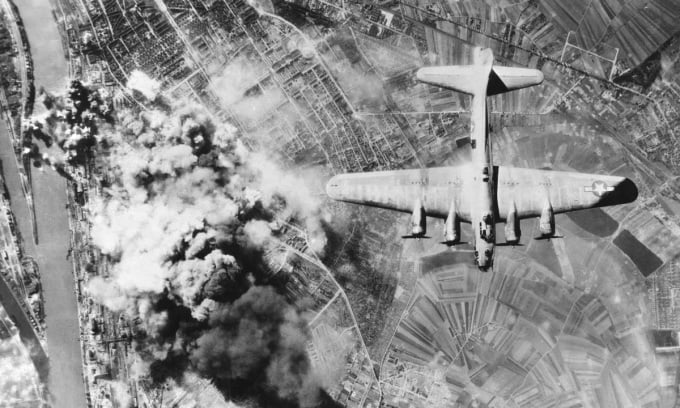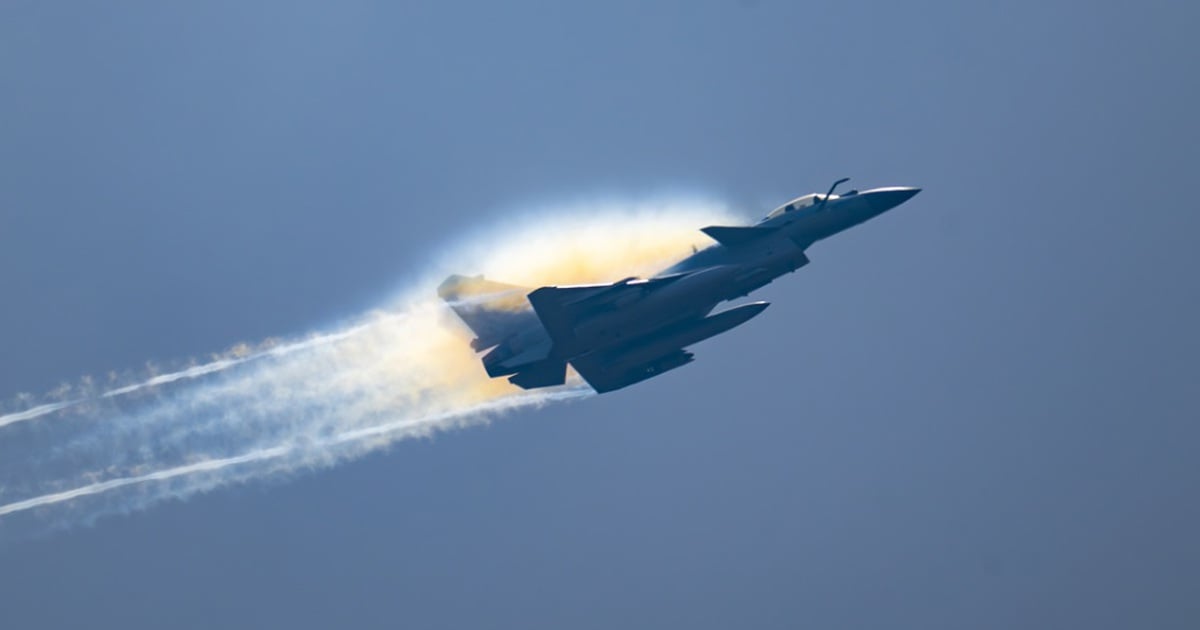Bombs containing the decades-old compound Amatol are becoming more dangerous as the substance becomes more sensitive to impacts.

A US Boeing B-17 Flying Fortress drops bombs on the Ludwigshafen synthetic oil and chemical plant in Germany during World War II. Photo: Everett Collection
The Earth has millions of tons of bombs, especially from the two world wars that took place in the 20th century. While a large amount has remained buried and forgotten for decades, new research by a team of scientists from the University of Oslo and the University of Stavanger (Norway) shows that many bombs contain a chemical that makes them more likely to explode over time, IFL Science reported on March 27. The new research was published in the journal Royal Society Open Science.
The chemical was Amatol, a highly explosive material made from a mixture of TNT and ammonium nitrate, used in many types of ordnance developed for World War I and World War II, including aircraft bombs, artillery shells, depth charges, and naval mines.
Other common explosives, such as pure trinitrotoluene (TNT) or Pentaerythritol tetranitrate (PETN), remain relatively stable over time and do not become more dangerous than they were initially. However, Amatol appears to become more susceptible to damage over time if stored under certain conditions.
In a new series of experiments, the Norwegian team dropped weights on five samples of Amatol explosives collected from the battlefield. The results showed that the bombs were more sensitive to impact and became increasingly unstable. This change in properties is likely due to the way Amatol reacts with other chemicals in the natural environment.
"The study revealed that the presence of moisture, among other factors, may contribute to the increased sensitivity to the effects of Amatol. Explosive mixtures containing ammonium nitrate can become sensitized when contaminated with small amounts of metal, or when in contact with metal. These metal contaminants can react chemically with ammonium nitrate, forming complex salts and sensitizing the mixture," the team explained.
Unexploded bombs from World War II are not uncommon. Last month, a 500kg German bomb was found in the backyard of a house in Plymouth, England. More than 100 soldiers and bomb experts responded to the scene, while 10,000 nearby residents were evacuated. Fortunately, the bomb was safely defused without any injuries. However, in 2008, 17 people were injured at a construction site in the town of Hattingen, Germany, when an excavator ran over a 250kg World War II bomb, causing it to explode.
The new study suggests that incidents involving unexploded ordnance may become increasingly serious. The team also stressed that those responsible for handling unexploded ordnance should be informed of the increasing sensitivity to Amatol over time.
Thu Thao (According to IFL Science )
Source link


![[Photo] Prime Minister Pham Minh Chinh receives CEO of Standard Chartered Group](https://vstatic.vietnam.vn/vietnam/resource/IMAGE/2025/4/2/125507ba412d4ebfb091fa7ddb936b3b)
![[Photo] Comrade Khamtay Siphandone - a leader who contributed to fostering Vietnam-Laos relations](https://vstatic.vietnam.vn/vietnam/resource/IMAGE/2025/4/3/3d83ed2d26e2426fabd41862661dfff2)


![[Photo] General Secretary To Lam receives Russian Ambassador to Vietnam](https://vstatic.vietnam.vn/vietnam/resource/IMAGE/2025/4/2/b486192404d54058b15165174ea36c4e)
![[Photo] Prime Minister Pham Minh Chinh receives Deputy Prime Minister of the Republic of Belarus Anatoly Sivak](https://vstatic.vietnam.vn/vietnam/resource/IMAGE/2025/4/2/79cdb685820a45868602e2fa576977a0)




























































































Comment (0)